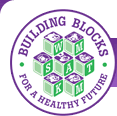 |
|
 |

Peer Pressure: Learning to Say “NO”
Peer pressure (influence that members of the same age group can have over each other) becomes a great risk to our children once they reach middle school. But, even young children can exert pressure on their classmates. The human need to belong is strong even in preschoolers and, already, they are becoming more concerned with what their friends think and do than what the adults in their lives think and do.
Children give into peer pressure because they want to be liked, they don’t want their peers to make fun of them, or the other kids are doing it. And, sometimes, they are just curious. Start helping children build their confidence and skills to say “no” when they are very young and continue to foster their their refusal skills as they grow. These skills are critically important especially during times of change or transition (i.e. elementary to middle school, middle school to high school). If these skills are well-developed, as they reach adolescence and encounter the negative peer pressure to engage in very risky behaviors, such as smoking, drinking, and sexual activity, they will be able to say “no.”
Purpose:
To help children discover and practice refusal skills and recognize and appreciate each other’s strengths
Materials:
- Large round balloon
- Digital camera or photos from home
- 1 copy of “My Very Best Self” for each student
- Art supplies
Preparation:
- Have children bring in photos of themselves; or, use a digital camera to take pictures of the students and print them out.
Procedure:
For Younger Students (3-4)
- Start with a deflated balloon. Now, ask children to describe something they can do well. Every time a child answers, blow a little air into the balloon. When the balloon is full, tie it off and say that they are a lot like the balloon. When they do something that makes them feel good, they stand taller and when they do something that makes them feel bad, they droop a bit.
- Have the children stand up and tell them they are going to be balloons. Describe something that would make them all proud: “You ran the fastest in the race on the playground.” All the children should stand taller. Describe something that would make them feel bad. “Your friend made you stop playing with the ball and chase other kids away instead.” All the children should droop a bit. Continue to describe actions and accomplishments that can make children feel “taller” or “smaller.”
- Have the students talk about what made them feel better. (Answers will vary, but should include: I loved stretching tall; I liked when I felt like I was a winner; it’s more fun to feel good and big, etc.)
Teaching Note: Finish the activity by going to “For Everyone.”
For Older Students (5-6)
As with any class discussion with young children, the most important thing is to make them comfortable talking about things they may have done that were not “right.” You may need to do a lot of prompting at first, but children will begin to respond.
- Gather students in a circle for a class talk. Have them name things they like to do. Then ask, has another child ever tried to make you do something you did not want to do? If so, what did they want you to do? (Answers will vary, but may include: play a different game; take something that belonged to someone else; talk when it was quiet time)
- Ask: How did other kids make you do something you didn’t want to do? (Answers will vary, but may include: he made fun of me, called me stupid; told me she wouldn’t be my friend; said I couldn’t play with the group, etc.) How did it make you feel when you did something you didn’t want to do? (Answers will vary, but may include: I felt bad; I felt scared; I didn’t want to be with those friends, etc.)
- Hold up a deflated balloon and talk about how this droopy balloon shows how you feel when a friend makes you do something you don’t want to do. What can you do when you feel pressured by another child? With each answer, blow a little air into the balloon. Have the children continue talking about good things they could do until the balloon is completely inflated. (Answers will vary, but may include: Say ‘no’ and walk away; go play with someone else; talk to the teacher; find another friend; decide to do something you like to do; say your parents [teacher] won’t let you; say it’s your turn to be the leader; talk about the things you want to do)
For Everyone
Distribute a copy of “My Very Best Self” and art supplies to each student. Attach a photo of each child to his/her handout. If photos are not available, have the students draw a picture of themselves inside the balloon. Help children write several things about themselves that make them feel good; then, decorate the balloons. Mount the balloons where others in the school can see and share your students’ accomplishments.
Going Further:
Materials:
Play Building Blocks for a Healthy Future Sing-Along Songs: Power Positive and display the lyrics of the song, if possible. Ask the children to take turns moving, walking, strutting with the music. Have the children talk about how the music makes them feel. (Answers will vary, but should include: strong, confident, proud) Have them briefly talk about the things that they do well and that make them feel strong.
Resources
From Education.com
“Dealing with Preschool Peer Pressure” from More4Kids gives parents of preschoolers tips on how to handle peer pressure.
“Peer Pressure,” from the Encyclopedia of Children’s Health, explores peer pressure and peer relations across the age groups.
|
 |


 About Us
About Us  Links
Links  Get E-mail Updates
Get E-mail Updates  Awards
Awards



